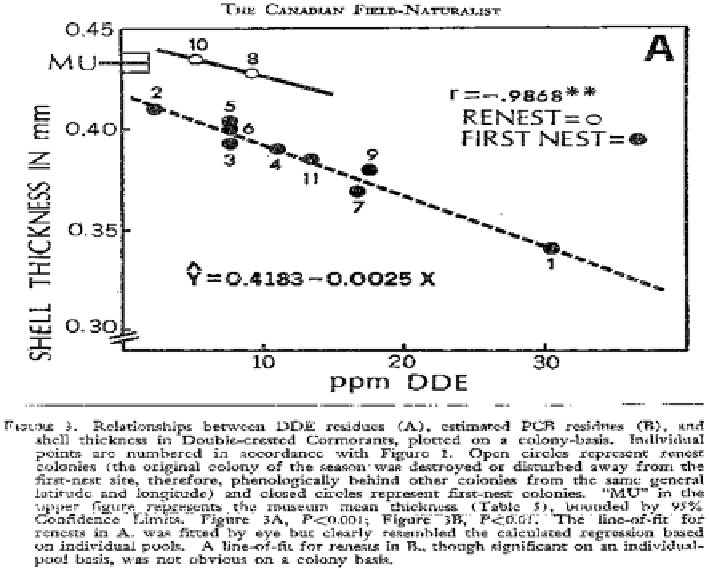Environmental Engineering Reference
In-Depth Information
Fig. 6
Eggshell thinning dose response in cormorants. Figure 3 in Anderson et al. (
1969
) reproduced
with permission
Gress et al. (
1973
) reported on a survey of double-crested cormorant breeding
colonies in the Channel Islands and the islands off of the west coast of Baja,
California in 1969-1972. Breeding was almost nonexistent in colonies on the
Channel Islands and South Los Coronados Island. Breeding appeared unaffected on
San Martin Island farther south. No crushed eggs were found on San Martin.
Eggshell thinning was 29% and 38% on Anacapa and Los Coronados, respectively.
Gress stated that “The San Martin eggshells show no signifi cant differences of any
of the parameters from the museum specimens.” DDE residues in eggs were 32 ppm,
24 ppm and 1.7 ppm on Anacapa, Los Coronados and San Martin, respectively.
He noted that other studies on double-crested cormorants had not found reproduc-
tive impairment with DDE residues as high as 10.4 ppm. DDE was associated with
8.3% eggshell thinning. He concluded that “The comparatively low levels of DDE
reported suggest that the degree of thinning, if present, would not be suffi ciently
great to affect reproductive success.” Comparisons with studies of interior popula-
tions indicated that the relationship between DDE residues and eggshell thinning
were the same. In addition, 80% of the variation in eggshell thickness could be
explained by the regression on the natural log of DDE. The 1972 survey suggested that
both the brown pelican and double-crested cormorant were beginning to recover.

Search WWH ::

Custom Search